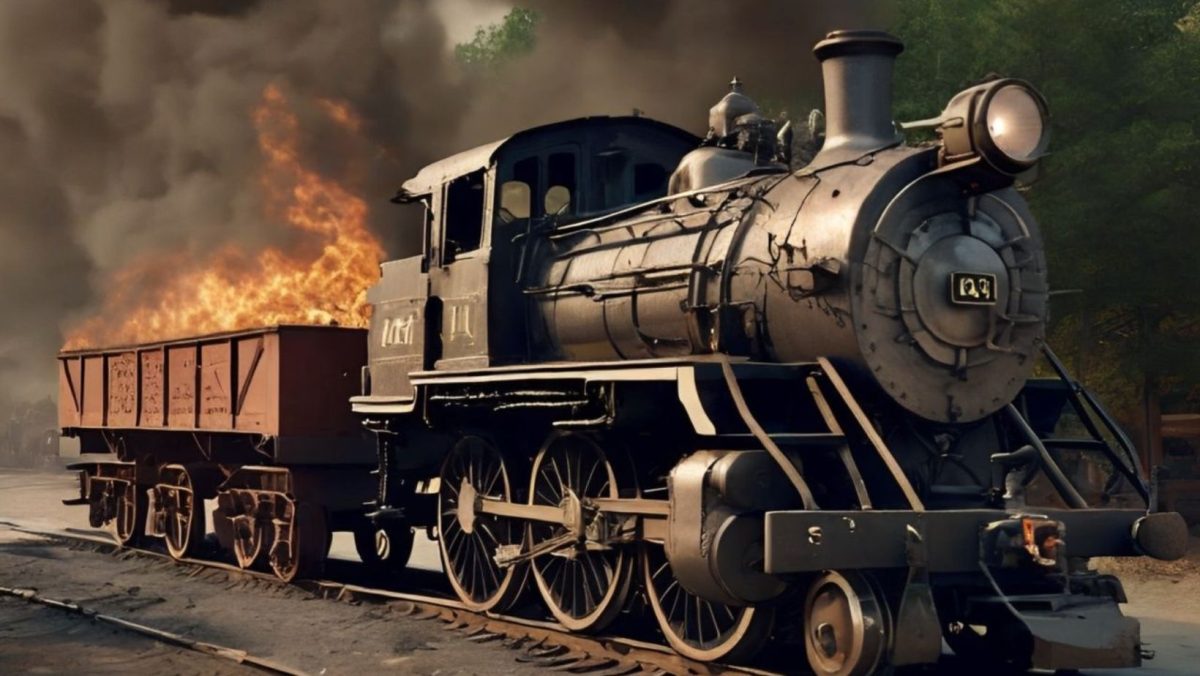
Train to Eternity: How a Young Mexican Engineer Became a Hero
5 de noviembre de 2023
By Jim Griffith
Jesús García saw responsibility, responded to it, and lost his life in the process of saving the lives of others.
Phelps Dodge, the company behind the development of Bisbee and Douglas, also operated the rich copper mines in Nacozari. The company built well, and if you go to Nacozari today, you’ll find parts of it looking more like an Arizona mining town than a Mexican community. There are square buildings of dressed stone with pitched roofs much like many of the old ones you can see in Bisbee, for instance. There also used to be a two-story adobe hotel that was still in business when I visited in 1974. On the second-floor landing—and it was a pretty creaky second floor even then—was a bookcase full of cheap Westerns published in the 1920s, all in English, of course.
The story goes like this: On Thursday, November 7, 1907, a young engineer named Jesús García was hauling supplies, including two cars full of dynamite, from the Nacozari depot to the mining operation at Pilares. His engine, a small 0-6-0 made in Pittsburgh, was in excellent condition, except for one recent development—a faulty smokestack that spewed hot cinders back onto the train. As he was leaving town, he and his fireman noticed that a box of dynamite in the leading car had caught fire. A brakeman tried to throw the box off the train, but the heat drove him away. García ordered the crew to jump and cranked on all possible steam in an attempt to roll the train out of town to a level place where he could safely abandon it. The danger was not from the dynamite itself, which can burn for a long time without exploding, but from the fuses and detonating caps that were somewhere in the load. García had barely arrived at the train yard called El Seis—number six—when the dynamite blew up. The engine was destroyed, García himself and twelve others were killed, and many more were wounded. But the town of Nacozari and its inhabitants were saved.
García’s act of heroism was and is remembered in many ways. García himself was given posthumous honors, including the American Cross of Honor. (That a U.S. citation went to a Mexican citizen also says something about the influence of Phelps Dodge in those days.) The town he saved now appears on the maps as Nacozari de García. Statues and monuments to the brave engineer are found in many parts of Mexico; there’s one, complete with an old switch engine, on Calle Adolfo Lopez Mateos, the main northbound street through Nogales. November 7 is still celebrated in Nacozari and has become Mexico’s national day of the railroad worker. Nacozari’s famous composer Silvestre Rodriguez (incidentally, the man who taught music to Leonardo Yanez, composer of the famous corrido El Moro de Cumpas) wrote a march in García’s honor. And Mexico’s popular bards, the corridistas, have honored the hero in song and verse.
I know of three corridos about the incident. One, Máquina 501, is so popular it can be called a part of Sonora’s artistic patrimony. It focuses on certain dramatic moments—García’s farewell to his mother at the end of his lunch break, moments before the tragedy; the discovery of the burning dynamite, then the explosion itself. Some liberties are taken with the facts: although García is remembered as having ordered the rest of his crew to jump, the ballad has the fireman urging García to save himself. This is so he can reply with the epic lines:
Jesús García contesta:
“Yo pienso muy diferente;
yo no quiero ser la causa
de que muera tanta gente”.
(Jesús García answers:
“I think very differently;
I don’t want to be the cause
of so many people dying.”)
A heroic understatement on the lines of John Henry’s “A man ain’t nothing but a man/But before I let that steam drill beat me down/I’ll dye with my hummer in my hand.”
Questions remain, of course. Was García’s act necessary to save the town? Don Dedera and Bob Robles in their book Goodbye, García, Adiós, published by Northland Press in 1976, conclude that it was. Was the tragedy the consequence of previous mistakes? Probably so: the regular conductor was out sick that day, and he likely would not have allowed the dynamite cars to be placed next to the engine, a move contrary to established rules. But these questions cannot obscure the fact that García saw a responsibility, responded to it, and lost his life in the process of saving the lives of others. It wasn’t necessarily a suicidal move, remember; if he had made it past El Seis he might have jumped to safety and let the load blow up in unoccupied territory. He took his chances and lost.
While we are talking about heroes. I’ve got another local favorite to mention in passing: Estevan Ochoa, native of Chihuahua and founder of the important early Tucson mercantile company of Tully and Ochoa. When the Confederates occupied Tucson in 1862, Mr. Ochoa was ordered to abandon his stance as a Union supporter, he answered: “It is out of the question for me to swear allegiance to any party or power hostile to the United States government, for to that government I owe all my prosperity. When, sir, do you wish me to leave?” Fine words, a refreshing example of honesty and loyalty, especially noble in the context of the 1980s.
The parallels aren’t exact, of course. García was a young engineer who, according to some accounts, probably was suffering from a hangover contracted from an all-night bout of partying and serenatas, while Ochoa was a man of substance (and presumably sobriety) in his community. García gave his life, while Ochoa returned to Tucson two weeks later with the Union Army and went on to become one of our early mayors. But each rose to the occasion that presented itself and each is a remarkable representative of a cultural tradition that involves honor, bravery… and no little sense of style.
Published in City Magazine
Tucson, Arizona, May 1989
Vol. 4, No. 5
Cover Photo: AI-Generated Image by Imagined
© All Rights Reserved
